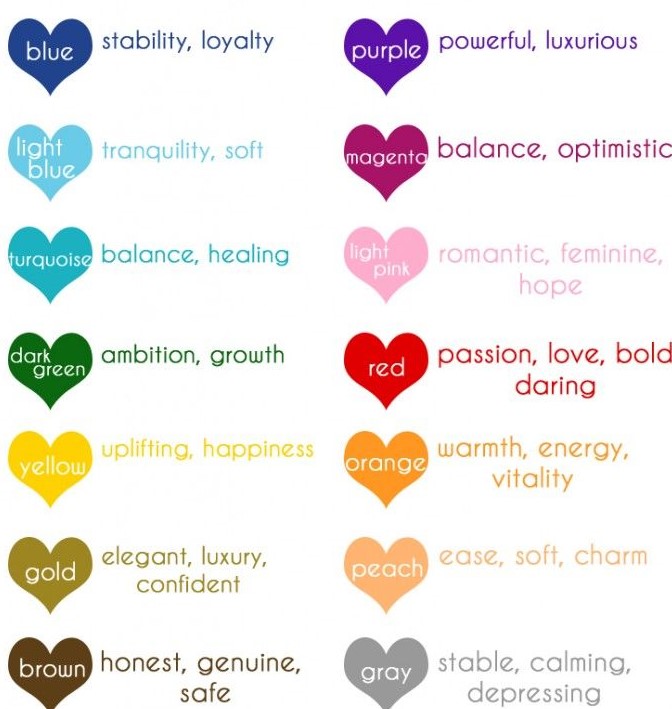Have you ever noticed the different colors associated with hearts and wondered what they signify? The symbolism of heart colors is a fascinating topic, encompassing emotions, relationships, and even cultural interpretations. In a world where visual communication has become increasingly prevalent, the colors we associate with hearts can convey a wealth of meanings without uttering a single word. As we delve into the heart colors meaning, we will explore how these hues resonate with our feelings and experiences, adding depth to our interactions.
The heart, a universal symbol of love and affection, is often depicted in various colors, each representing different emotions and sentiments. The meanings behind these colors can vary widely across cultures, personal experiences, and contexts. From the classic red heart of passionate love to the calming blue heart of tranquility, understanding the heart colors meaning allows us to better articulate our feelings and connect with others on a deeper level.
In this article, we will uncover the myriad interpretations of heart colors, answering common questions and providing insights into how these colors shape our emotional landscape. Whether you’re curious about the significance of a specific color or seeking to understand how to express your feelings more effectively, the heart colors meaning will serve as a valuable guide. Join us as we navigate this vibrant spectrum of emotions through the lens of color.
What Does a Red Heart Symbolize?
A red heart is perhaps the most recognized symbol of love and passion. It embodies strong emotions, including desire, love, and affection. Red is a color that evokes feelings of warmth and intensity, making it a popular choice for romantic gestures such as Valentine's Day cards and gifts.
Are There Different Shades of Red and Their Meanings?
Yes, there are various shades of red, each carrying its own nuances:
- Crimson: Represents deep love and passionate commitment.
- Cherry Red: Evokes youthful love and exuberance.
- Burgundy: Suggests a more mature and sophisticated love.
What About the Meaning of a Pink Heart?
A pink heart is often associated with gentle love, affection, and compassion. It represents a softer side of love, such as friendship and care. Pink is a nurturing color, evoking feelings of warmth and tenderness.
Can Pink Hearts Represent Different Types of Love?
Absolutely! Pink hearts can symbolize various types of love, including:
- Friendship: A light-hearted bond filled with care and support.
- Romantic Love: A sweet and gentle attraction.
- Self-Love: Emphasizing the importance of caring for oneself.
What Does a Blue Heart Mean?
In contrast to the warm tones of red and pink, a blue heart often symbolizes calmness, peace, and tranquility. It can represent a sense of stability and loyalty in relationships.
Is a Blue Heart Associated with Sadness?
While blue can signify sadness in certain contexts, a blue heart often conveys a sense of serenity and emotional depth rather than merely sorrow. It can reflect a deep understanding and emotional intelligence in relationships.
What Does a Green Heart Represent?
A green heart is symbolic of growth, renewal, and harmony. It is often associated with nature and signifies a healthy relationship that is flourishing and thriving.
Can Green Hearts Indicate Jealousy?
Yes, in some contexts, a green heart can indicate jealousy or envy. However, it is more commonly viewed as a representation of balance and positivity in relationships.
What Is the Meaning of a Yellow Heart?
A yellow heart represents friendship, joy, and happiness. It conveys a sense of cheerfulness and positivity, making it a popular choice to express platonic love.
How Does a Yellow Heart Differ from Other Colors?
Unlike red or pink hearts, which are more romantic, a yellow heart focuses on the joy and warmth of friendship. It signifies a light-hearted connection that is playful and uplifting.
What Do Black and White Hearts Symbolize?
Black hearts are often associated with loss, mourning, or a darker aspect of love. In contrast, white hearts symbolize purity, innocence, and new beginnings. Both colors carry significant weight in emotional expression.
Can Black and White Hearts Represent Different Emotions?
Yes, the meanings can vary widely depending on context:
- Black Heart: Often reflects sorrow, betrayal, or a loss of love.
- White Heart: Represents hope, peace, and new opportunities in love.
How Do Cultural Interpretations Affect Heart Colors Meaning?
Cultural differences can greatly influence the meanings associated with heart colors. In some cultures, colors may represent different emotions, traditions, or even ideologies. Understanding these cultural nuances can enhance our appreciation of the heart colors meaning.
For example, while red is a symbol of love in many Western cultures, in some Eastern cultures, it may also signify prosperity and good fortune. This highlights the importance of context when interpreting the meaning behind heart colors.
Conclusion: Why Is Understanding Heart Colors Meaning Important?
Understanding the heart colors meaning enriches our ability to communicate emotions and connect with others. Whether expressing love, friendship, or even sorrow, the colors we choose can convey layers of meaning beyond words. By learning about the significance of heart colors, we can enhance our emotional intelligence and foster deeper connections in our relationships.
As we navigate the vibrant landscape of emotions, let the heart colors meaning guide you in expressing your feelings authentically and meaningfully.
Kate Beckinsale's Journey To Finding Love: Who Will Be Her Partner In 2024?
Unveiling The Charismatic Journey Of Kim Jae Wook
Unveiling The Life And Career Of Bridget Fonda


